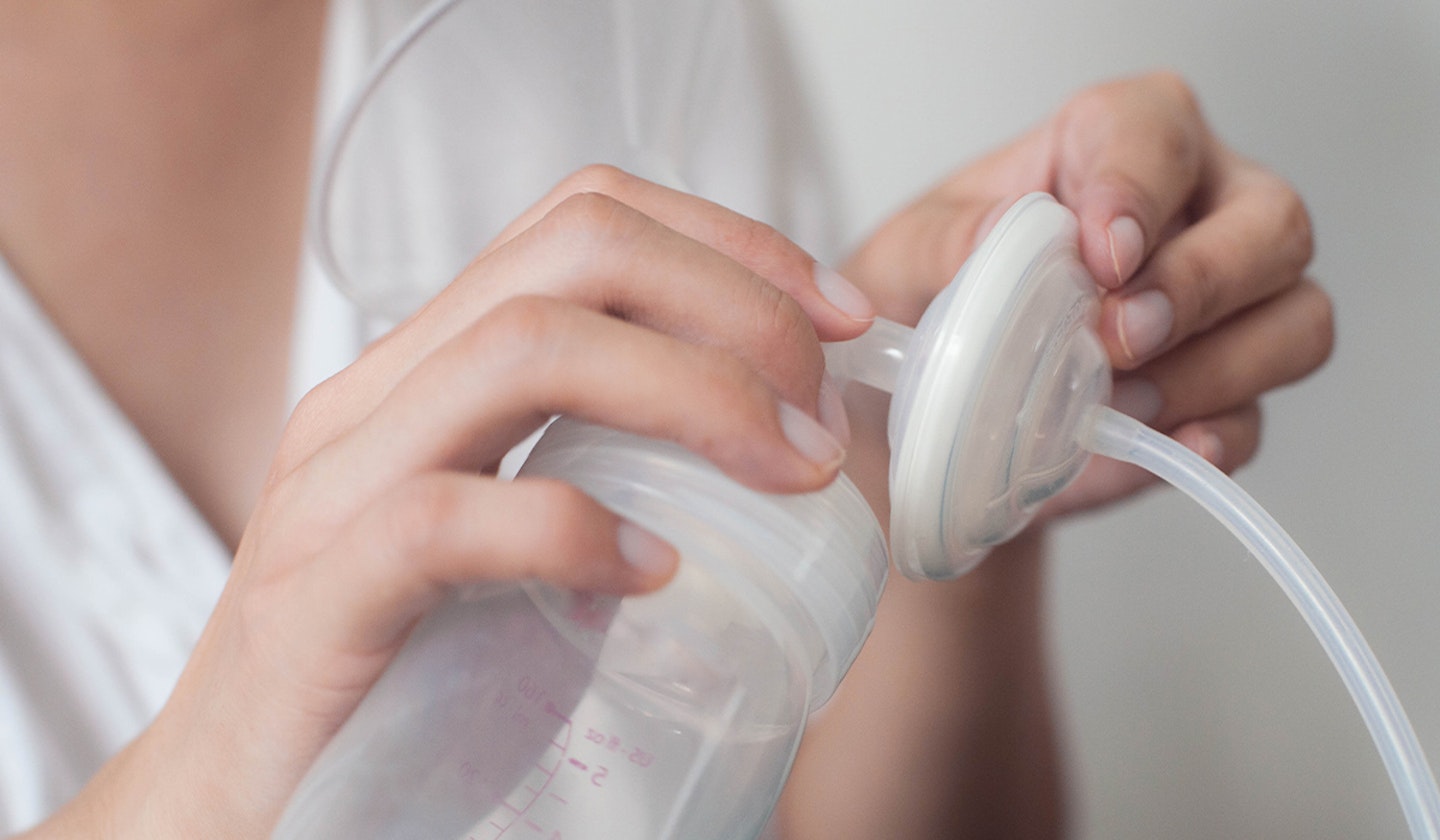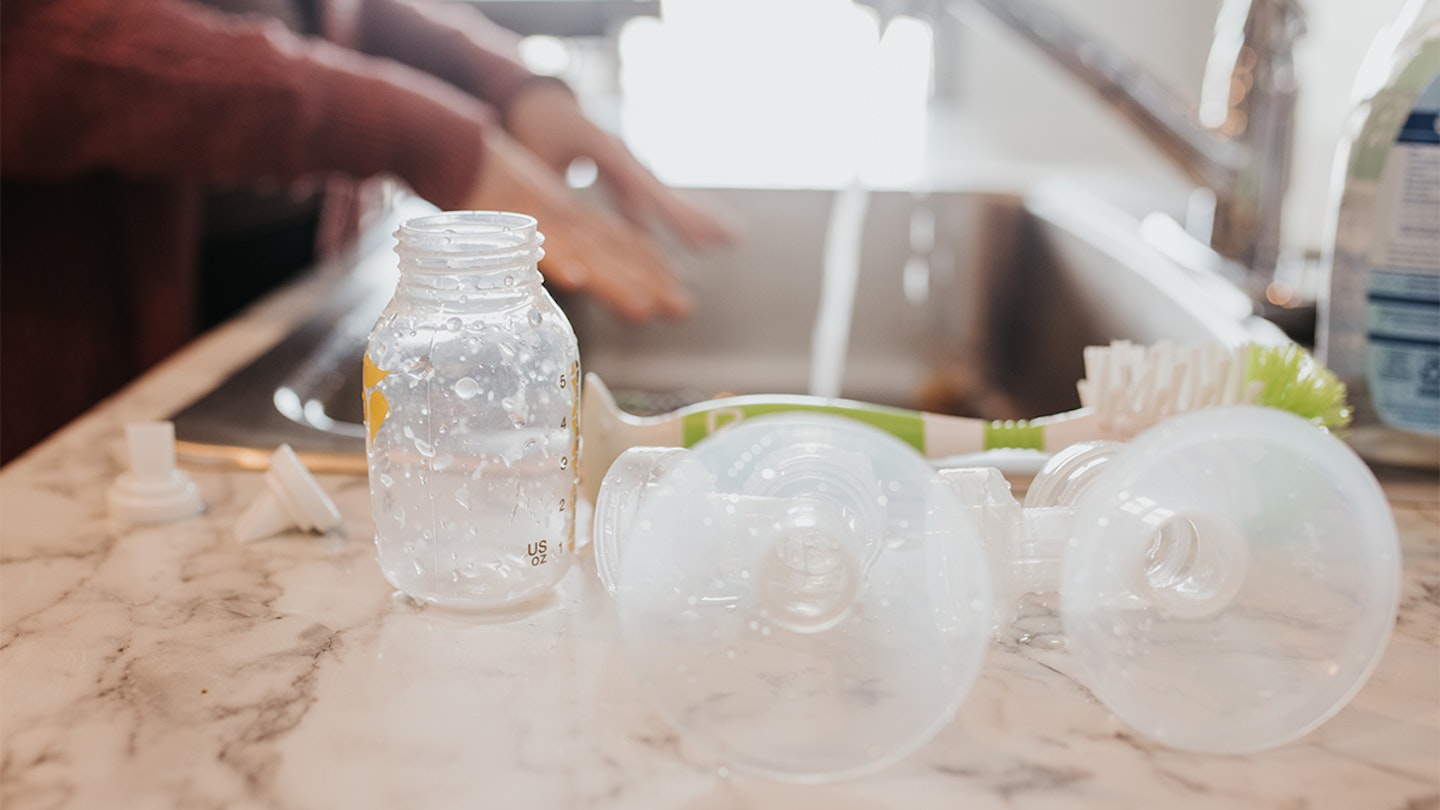Between night feeds, sleeping and nappy changes, you might not feel like cleaning, but knowing how to properly sterilise your breast pump is essential to keeping your baby healthy. Similar to sterilising baby bottles, once you know what you're doing and get into the habit of it, using a steriliser for your breast pump becomes second nature.
It's particularly vital to keep any feeding equipment clean in those first few months according to the NCT. Babies under 1 year old don't have the same immune systems to protect them against bacteria, so it's important to sterilise all your baby's feeding equipment, including breast pumps.
Whether you're using an electric breast pump or a manual breast pump, you'll need to make sure all the parts of it are kept clean and dried thoroughly after cleaning. This includes any valves, bottles and breast shields. To help you learn how to quickly and thoroughly sterilise your breast pump, we've put together some handy instructions so it's nice and clean for you and baby next time you use it.
How to clean your breast pump
Keeping everything clean
When we say everything, we mean everything. Before every pumping session, remember to wash your hands thoroughly with soap for at least 20 seconds, then rinse them and dry with a clean towel. There’s no need to wash your breasts unless they have cream or cosmetics on them that aren’t compatible with breastfeeding. Keep any surfaces disinfected that you'll be placing your breast pump down on.
After you’ve expressed, always wash any pumping equipment, such as bottles, valves and breast shields, that have touched your breasts or milk and then dry thoroughly so they’re ready for your next session. Washing as soon as possible will prevent milk drying onto the equipment.
Give your breast pump a regular check
It's scary how easily mould can grow in hard to reach areas of a pump, so before using it, give it a good inspection to check for any mould. If you do spot some mould, it's advised to change the part as it's very difficult to fully remove and clean.
Wash your pump after each use
Firstly, it's worth checking your instruction manual to see if any of these components can be cleaned in the dishwasher – this will make your life a lot easier. If you are washing it in the dishwasher, make sure you fully dismantle it and run it on a very hot cycle.
If your pump isn't dishwasher safe, fill a clean washing up bowl with soap and hot water. We'd advise against washing in the sink as your plug can often hold a lot of bacteria. Once you've scrubbed each individual piece of the pump in the hot soapy water, rinse under clean running water.

How to sterilise a breast pump
After thoroughly washing your parts, you'll need to sterilise your pump. Before every feed, you will need to make sure that all parts of your baby’s bottle have been sterilised; including the bottle, teat, lid and any internal parts of the bottle such as anti-colic venting tubes. You'll also want to do this if your breast pump is brand new or hasn't been used for a while.
Before you sterilise, you'll want to check the manufacturer's manual as it should provide you with instructions on how to safely sterilise your breast pump. There are a few common methods that may be suggested:
• Boiling water – Place all the parts into a large pan of boiling water. Cover and leave them to boil for around five minutes, making sure everything stays submerged in the water.
• Steam steriliser – You've probably already got a good steriliser that you use for baby's bottles and you should be able to use it to sterilise your breast pump too. Just be sure to place all the parts faced down in the steriliser.
• UV – UV sterilisers can also be used to sanitise your breast pump kit. Once it’s sterilised your equipment can be used immediately after too, as they don’t need to be cooled down.
• Use the microwave – Many sterilisers are designed to be used inside the microwave. Simply follow the manual to use it. Alternatively, you could try microwaveable sanitising bags which are great to use if you're travelling and can't take your sterilising equipment with you.
• Sterilising tablets – For a cold water sterilising solution, you could use some sterilising tablets dissolved in cold water. Simply submerge all the parts into the water for at least 30 minutes.
• Sterilising fluid or spray – Some people choose to use a cold-water sterilising solution. If you do, make sure all parts are submerged, with no trapped air bubbles, for at least 30 minutes (and discard the solution after 24 hours). Alternatively, you could use a sanitising spray.
• Make sure it dries thoroughly – If you've washed your pump in the dishwasher you may find it air dries naturally but if you've washed in the sink or your pump is looking a little damp, then you'll want to dry it thoroughly. Lay everything out to dry on a clean towel or paper towel. Avoid using a used tea towel as these can carry germs.
How often should breast pumps be sterilised?
We'd recommend washing your pumping equipment after each use and sterilising it once per day. Following this cleaning pattern will help ensure your breast milk is safe for storing for baby.
The NHS advises that you should sterilise any bottles or containers used to store expressed breast milk before use. They also suggest cleaning your breast pump after every use, and sterilising your breast pump at least once a day to kill any harmful bacteria that could infect your baby. It's also recommended to sterilise your breast pump when brand new, before use.
Sterilising/sanitising baby equipment, such as dummies and baby bottles, ensures equipment is perfectly safe for you and your baby, and will always help to add an extra layer of protection for your baby; which may be particularly important if your baby is less than 3 months old, was born prematurely or has a weakened immune system.
What's the difference between sterilising and sanitising?
Sanitising is a much more appropriate term for how we clean breast pumps. This is because it's pretty much impossible to completely sterilise anything at home, even if you're cleaning it in boiling water as our homes aren't totally sterile environments. Rest easy though that sterilising equipment is designed to fully sanitise all your baby's equipment making it perfectly safe for you and baby.
How should breast pumps be stored?
Once all the parts of your breast pump are cleaned, sanitised and dried, reassemble it and store it safely in a clean food container with an airtight lid where it won't be exposed to germs.
What temperature should the water be when washing a breast pump?
The ideal temperature to give your pump a good scrub with soap is 30°C/86°F. This will leave it clean and ready for sterilising without being too hot on your hands.
